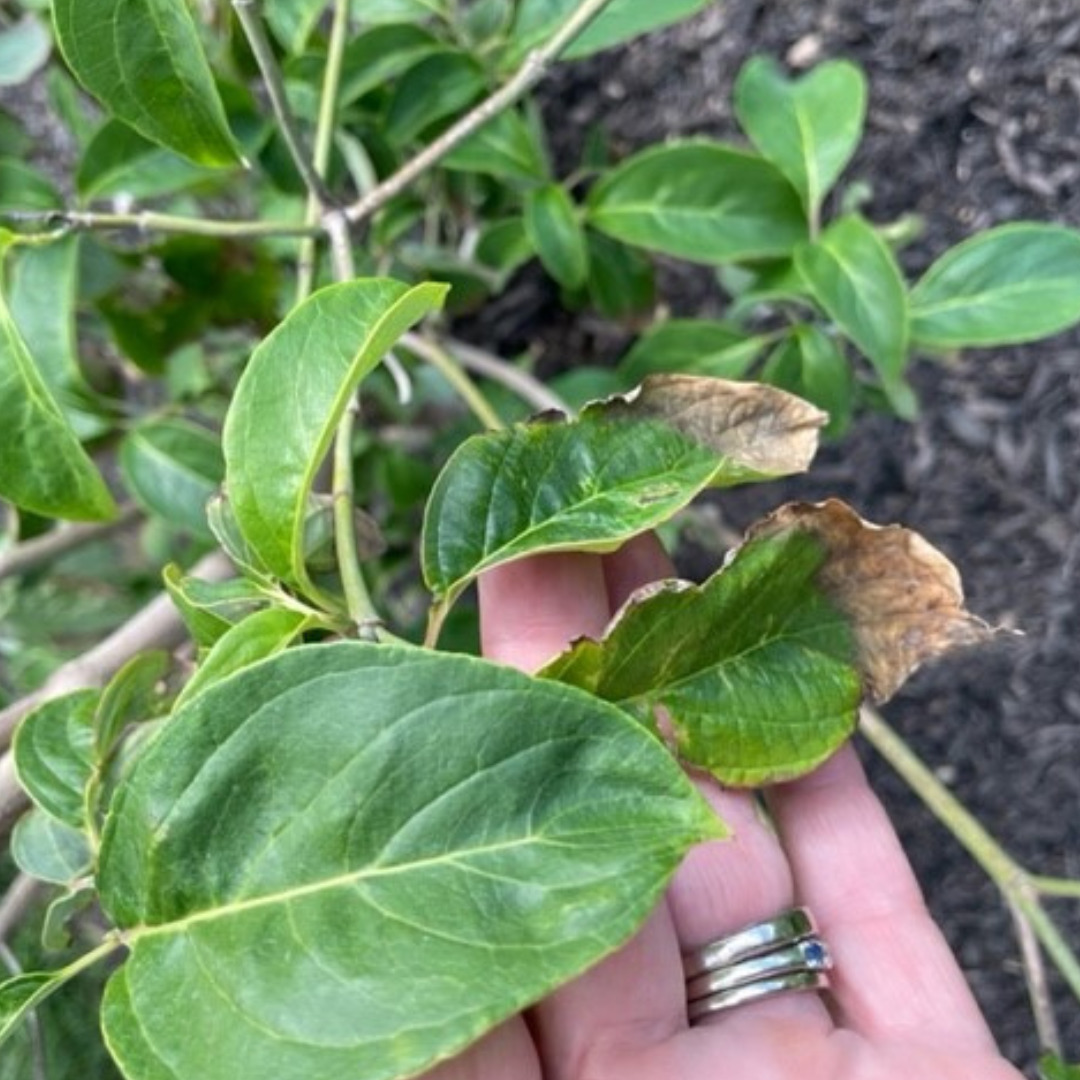
This summer’s extreme heat and drought —unprecedented in some regions—is now manifesting with obvious effects on numerous trees, shrubs and plants in our neighborhoods and our personal gardens. Every plant is a living organism that needs moisture to survive. Most plants are resilient and can adapt to some stressful conditions. But once the moisture available to a plant’s roots declines beyond a minimum level, recovery becomes unlikely.
Some deciduous trees like birch, dogwood, maple and crabapple respond to exceptionally dry and hot conditions by shedding leaves; broadleaf plants including rhododendrons and hollies curl their leaves to reduce evaporation; needles on narrow-leaf evergreens can discolor, “flag” or drop-off. Lawns often become crunchy and totally dead-looking, but they will recover. Plants growing in open, sandy and well-drained soils show symptoms first because their root systems dehydrate more readily than those that are well-mulched in more-clayey soils and soils with higher organic content.
Each tree or shrub’s response to extreme conditions can be temporary; many plants can embark upon early dormancy and fully recover with “normal” conditions. A significant rainfall at the right time is obviously best because the resulting moisture encompasses the entire garden. But hand-watering directly on root systems will also be effective and is necessary when symptoms occur, particularly with newer plantings.
Many plants are physiologically resistant to dry conditions once established in the garden, and they show minimal drought effects. But when conditions like we’re experiencing now occur, even many of them can be affected. Thankfully the extreme temperatures of the last few weeks seem to have normalized, so rescuing plants showing symptoms may still be possible with your immediate attention. This important article explains how.
The fundamental task for every nursery is maintaining proper moisture for their plants until they are sold to customers. No nursery or garden center can guarantee survival for situations that are beyond their control, so every homeowner must take personal responsibility for properly watering their plants. Plants that are weakened by inadequate (or excessive) moisture become more susceptible to adventitious organisms, diseases, and insect attack. Knowing the signs of stress and understanding how to respond is critical in assuring the successful performance of the plants in our gardens.









